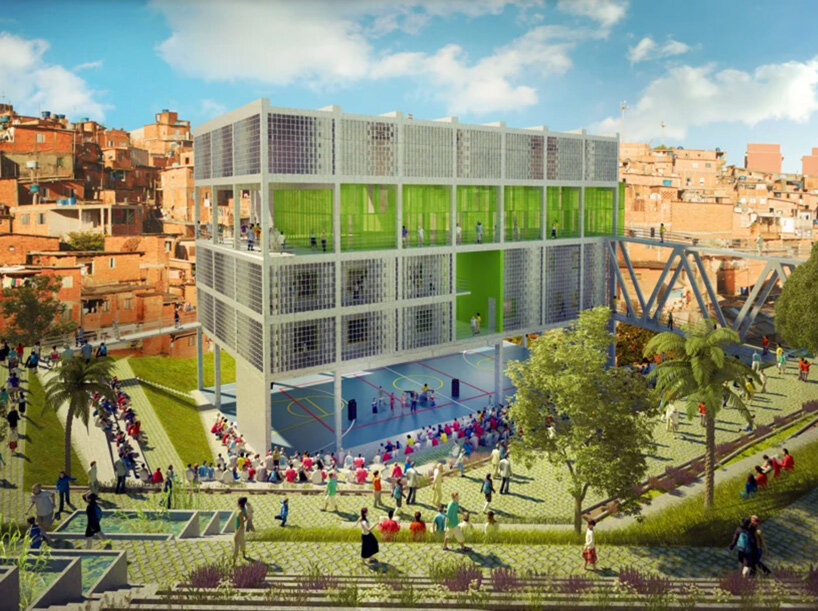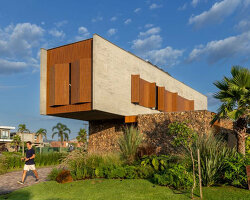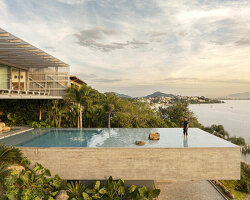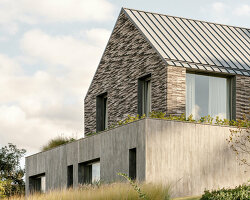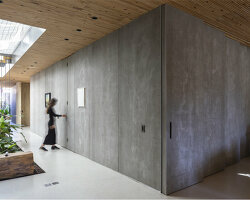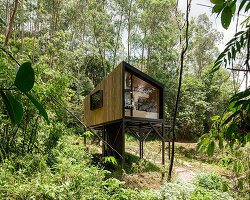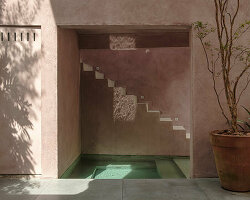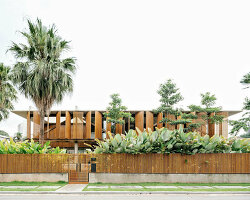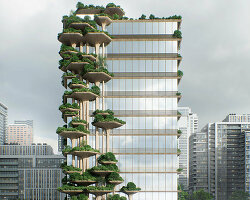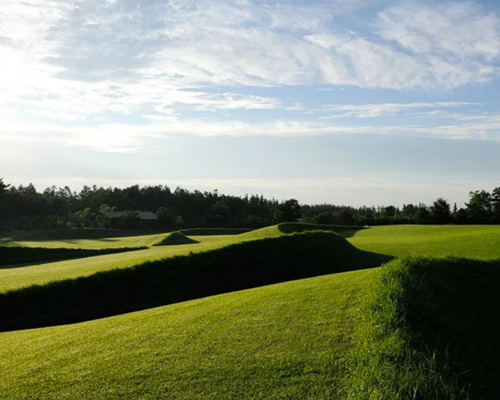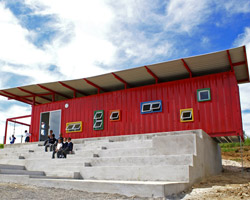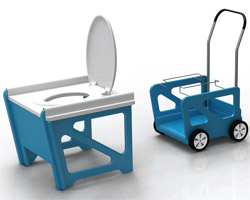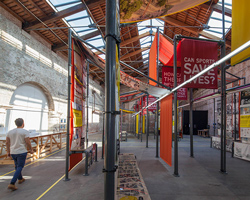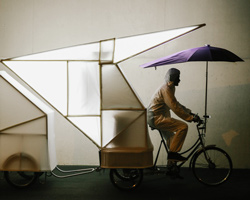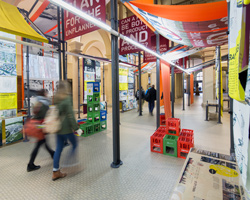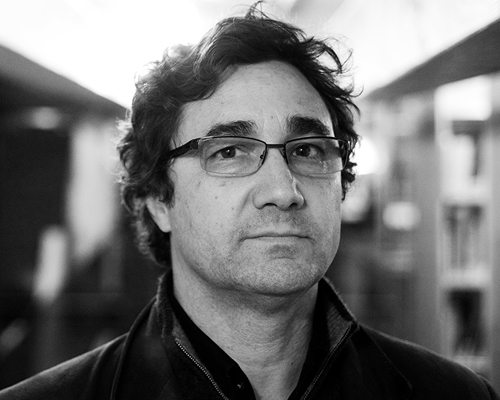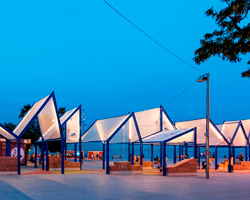urban-think tank presented their creative practice as speakers of this year’s design indaba conference in cape town, south africa. their research and development approaches architecture from a humanitarian standpoint in which the trajectory of their work over the past decade has been aimed at increasing the understanding of the informal city, rethinking the former physical limitations of contemporary architecture, and shifting the emphasis from form-driven to purpose-oriented social architecture.
one of their most recent proposals is an urban remediation and civic infrastructure hub located in grotão the heart of the paraisópolis favela of são paulo, brazil. the challenging topography and informal settlements are transformed into a productive zone and dynamic public space through social design – a process of analyzing the local effects of rapid growth and improving marginalized settlements through social structures.the project is a multifunctional public building which won the holmium gold award latin america last year, which will help fund and build the project.
the lower zone contains the fábrica da música, which stacks diverse programs to maximize the site’s potential. these include public transportation, sports facilities and the music school, which provides practice and rehearsal spaces, studios, a performance hall, and auxiliary classrooms. this is a vital catalyst in the area, expanding music and cultural programs into the favela while forming a new network that serves the youth from all levels of society. the upper level will host new replacement housing for those displaced from the high-risk areas. commercial spaces are introduced on the first floor as an economic vehicle that activates the street space and stimulates the micro-economy of the urban agriculture on site.
the project proposes that architects eschew their conventional role in traditional hierarchies to serve as an enabling connection between the opposing forces of top-down planning and bottom-up initiatives. by creating common ground for these two forces, areas can eliminate divisiveness and generate productive interactions. the priority becomes equipping this peripheral neighborhood with infrastructure, water, sewage networks, lighting and services in addition to social infrastructure in the areas of education, safety, culture, public space, and sports. the new urban model aims to translate a society’s need for equal access to housing, employment, technology, services, education, and resources — fundamental rights for all city dwellers — into spatial solutions.

all images courtesy of urban-think tank
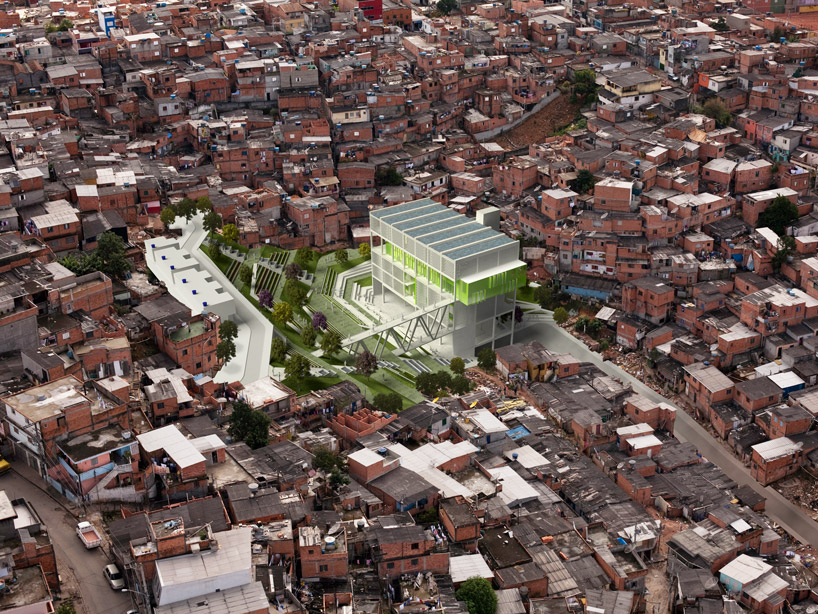
rendering of building onto the existing site
the new terrace system combines necessary physical infrastructure with social infrastructure, providing space for flexible and adaptable programs. they also make important connections to the surrounding neighborhood via existing pathways that have been disconnected. minimum of construction is used for maximum output concerning the practical needs of safety and the desires of public space and social systems.
the ramp system moves through the site creating public accessibility from the top to bottom and throughout the space and building. it develops a new public circulation system in an area known for challenging and dangerous topography. the urban agriculture helps transform the space from an empty void to a productive landscape. not only does this program provide food production on a small scale, but it also provides the community with the knowledge and an ability to implement this system in other areas.
the wetland system provides a passive filtration system for water re-use on-site. the water can be re-used for gray water applications and irrigation for the urban agriculture. the area acts as a catalyst to transform water, once seen as destructive force, into a productive element. the field serves as an area for sports as well as a stage for outdoor performances. it also provides space for vendors to sell produce from the urban agriculture, connecting many of the different pieces of the project into an activated platform.
the fábrica de música serves as a music and performing arts school. it accommodates classes, rehearsals and full performances. the building itself is a spark for positive change and a hub/node of innovative and cost-efficient technologies. it’s as a prototype that can be adapted to other high-risk sites as well as other areas of the city.


landscape and urban agriculture diagram
the school and landscape work as one building. the connection bridges provide access from site to the structure, forming a comprehensive circulation path that allows the public to enter at all floors in the institution and throughout the location. the elevator also acts as a public shaft enabling areas of ingress to all levels in the building and terraces.

terrace circulation
access to the site is provided by two roads, one at the top of the slope and the other at the bottom. the lower street adjacent to the building contains a bus stop and turnaround. public circulation is then able to continue up the hill via the public elevator and bridge connections.
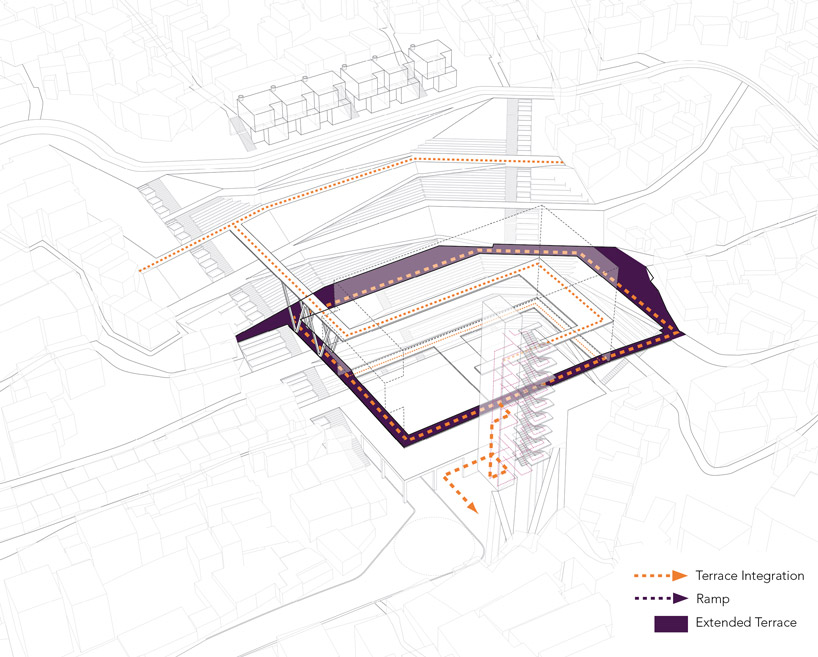
music school circulation

building systems
1. natural ventilation chimney combination of stack, solar and wind supported ventilated system
2. hybrid photovoltaic panels electricity during the day IR-Emission of water during the night
3. air conditioner
4. shading protects against solar exposure along the east and west facade
5. slab cooling tempering the concrete structure with embedded hydronic piping
6. hybrid ventilation natural ventilation in should seasons AC operation in humid season
7. cross ventilation wind from south direction provides fresh air, warm winds coming from north direction are blocked by the hill cooling water cycle
8. heat rejection from air conditioner
9. heat sink during the day
10. heat emission during night by lunar collector on roof
11. chilled water to air conditioner

water model
1. runoff cascades over permeable surfaces, absorbing excess stormwater and increasing water oxygen levels
2. site contours direct the water inward to minimize off-site discharge
3. runoff is collected into terraced wetland water gardens to trap contaminants and particulars. the system is a natural filter that enhances air quality, lowers ambient temperatures by evapotranspiration, and introduces habitat niches that attract foraging birds
4. treated overflow from the wetlands is collected into an underground cistern for storage and laster reuse
5. stored water is treated to local quality standards with rapid sand filtration and pumped to elevated tanks for reuse
6. water is lifted during dry periods to provide irrigation in planted areas
7. treated water is available for non-potable uses, such as toilet flushing
8. minimal stormwater is discharged to the public swear system

wall section of building system
1. hybrid photovoltaic panels
2. air conditioner
3. shading
4. slab cooling
5. hybrid ventilation
6. cross ventilation cooling water cycle
7. heat rejection from air conditioner
8. heat sink during the day
9. heat emission during night by lunar collector on roof
10. chilled water to air conditioner

level 0 plan

level 1 plan

level 2 plan

level 4 plan
project info:
client: secretaria municipal de habitação de são paulo (sehab), elisabeta franca and maria tereza dinitz
architect: urban-think tank architects llc, alfredo brillembourg and hubert klumpner
project architect: michael contento and lindsey sherman
project team: maria augusta bueno (architect of record/brazil), thiago duarte, joão paulo daolio, baldomero navarro,
carlos guimaraes and carolina montilla
acoustic engineer: dr. eckard mommertz and mueller-bbm international gmbh
sustainability engineer: thomas auer, daniel pianka and transsolar
water engineer: eric rothstein, ian lipsky and edesign dynamics
structural engineer: holger techen and imagine structure
envelope engineer: marcel bilow and imagine envelop
architecture in brazil (351)
architecture in sao paulo (57)
design indaba 2012 (11)
urban-think tank (16)
PRODUCT LIBRARY
a diverse digital database that acts as a valuable guide in gaining insight and information about a product directly from the manufacturer, and serves as a rich reference point in developing a project or scheme.
